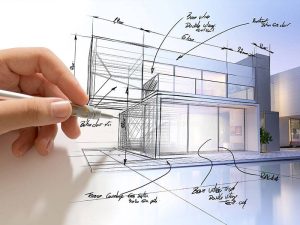Demystifying Structural Design: A Comprehensive Guide for Beginners
Introduction: In the realm of architecture and engineering, structural design stands as the cornerstone upon which sturdy, functional, and aesthetically pleasing buildings are erected. Whether you’re an aspiring architect, a curious student, or someone simply intrigued by the complexities of construction, understanding the fundamentals of structural design is crucial. In this comprehensive guide, we delve into the essence of structural design, exploring its definition, principles, key components, and its significance in the built environment.

What is Structural Design? Structural design is the art and science of creating frameworks, systems, and elements that support and withstand the loads imposed upon them. At its core, it involves the meticulous planning, analysis, and arrangement of materials to ensure the stability, safety, and durability of a structure. From towering skyscrapers to humble abodes, every building owes its integrity to the principles of structural design.
Key Components of Structural Design:
- Load Analysis: Before any construction begins, engineers conduct thorough assessments to determine the types and magnitudes of loads a structure will encounter. These loads can be categorized as dead loads (weight of the structure itself), live loads (occupant and furniture weight), environmental loads (wind, snow, earthquakes), and more.
- Material Selection: The choice of materials significantly influences the performance and longevity of a structure. Engineers consider factors such as strength, elasticity, durability, and cost when selecting materials like concrete, steel, timber, or composite materials.
- Structural Systems: Various structural systems, such as beams, columns, slabs, and trusses, are integrated to distribute loads efficiently and ensure structural stability. Each system has its unique advantages and is tailored to suit the specific requirements of the building.
- Codes and Standards: Compliance with building codes and industry standards is paramount in structural design. These regulations outline minimum requirements for structural integrity, safety, and environmental sustainability, ensuring that buildings meet established norms and withstand unforeseen circumstances.
- Analysis and Simulation: Modern advancements in technology have revolutionized the way engineers analyze and simulate structural behavior. Computational tools, such as finite element analysis (FEA) and computer-aided design (CAD), enable engineers to predict and optimize the performance of structures with precision.
Significance of Structural Design: The importance of structural design transcends mere aesthetics; it forms the backbone of safe and resilient built environments. A well-executed structural design not only ensures the safety of occupants but also minimizes the risk of structural failures, enhances energy efficiency, and contributes to the overall sustainability of buildings. Moreover, innovative approaches to structural design pave the way for groundbreaking architectural marvels, pushing the boundaries of what is deemed possible in the realm of construction.
Conclusion: In essence, structural design is the invisible force that shapes our built environment, blending creativity with engineering prowess to craft structures that stand the test of time. By understanding its principles and intricacies, we gain a deeper appreciation for the buildings that surround us and the minds that bring them to life. Whether you’re embarking on a career in architecture or simply curious about the world of construction, the journey into structural design promises to be both enlightening and awe-inspiring.

